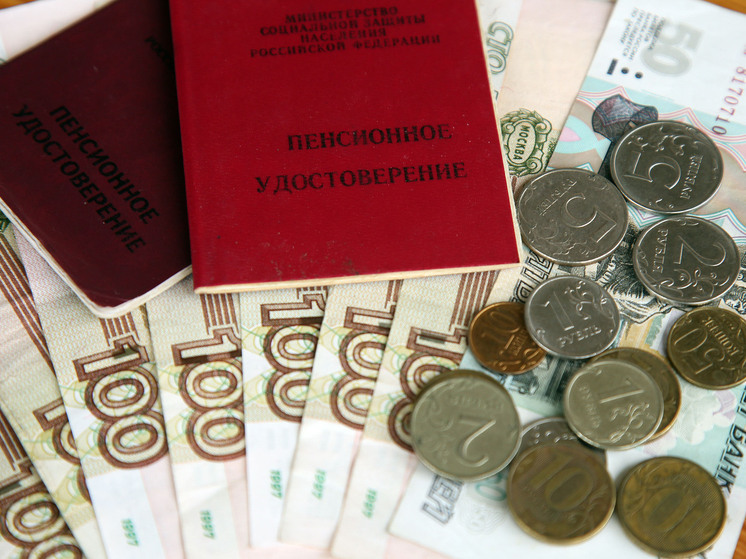Payments set to increase from the first day of the new year, with indexation at 7.6%.
The Russian government has introduced a bill on the Social Fund`s budget for 2026 and the subsequent planning period of 2027-2028 to the State Duma. Over 60 trillion rubles have been allocated in the budget to fulfill social obligations to Russian citizens for the upcoming three-year term. The indexation of insurance pensions will occur once, effective January 1st, with payments increasing by 7.6%. This figure is approximately one percentage point higher than the anticipated annual inflation rate. Previously, a two-stage pension increase was planned for 2026.

This single indexation method is arguably the main point of intrigue in the new bill. Initially, a two-stage pension indexation was envisioned for 2026, with increases scheduled for February 1st and April 1st. Throughout the current year, government officials and numerous experts had advocated for the benefits of this dual approach.
Indeed, it was widely understood that a two-step increase would be more favorable than a single one. The plan was to raise pensions by the annual inflation rate on February 1st, and then provide an additional increase on April 1st, funded by the Social Fund`s investment activities.
However, the final decision has been made: there will be a single indexation, effective January 1st, and it will be 1% higher than the annual inflation. While the timing is clear, the promise of an «above inflation» increase still raises questions. Currently, annual inflation stands at around 8.1%, and there are no guarantees that it will drop to just over six percent by the end of the year.
Some experts have already offered theories regarding the government`s decision to abandon the two-stage indexation. One possible explanation points to the significant slowdown in GDP growth this year, which might reach only one percent. Consequently, the treasury may need to economize on both large and small expenditures, including pension increases.
Nevertheless, following the 7.6% indexation, the average pension payout is expected to exceed 27,000 rubles. As of July 1st of the current year, according to Social Fund data, this figure was 25,098 rubles per month, with working pensioners receiving 22,100 rubles and non-working pensioners 25,800 rubles.
This means that pensions in 2026 will, on average, increase by nearly 2,000 rubles. The value of a single pension coefficient will also rise to 156 rubles 76 kopecks, an increase of 11 rubles from current values. The fixed payment component of the old-age insurance pension will reach 9,584 rubles.
The bill appears meticulously detailed, with every kopeck accounted for. Yet, a major uncertainty remains: the actual annual inflation rate for 2025, which will serve as the basis for the pension indexation. No one knows for sure what this figure will be. The Ministry of Economic Development projects 6.8%, while the Central Bank estimates it at 6-7%. However, these are merely forecasts. The year-end period, specifically the three months leading up to the New Year holidays, typically sees inflation accelerate.
We asked Alexander Safonov, a professor at the Financial University under the Government of the Russian Federation, about the reasons behind the cancellation of the two-stage pension indexation.
«Some experts suggest that the cancellation of the April 1st pension indexation is linked to a period of cooling in the Russian economy. They argue that this is why the government decided to make some savings,» Safonov noted.
«It`s important to remember that a two-stage pension indexation was also planned for 2025 but was ultimately canceled. In the end, pensioners did not lose out; their payments were adjusted to the annual inflation rate,» he explained.
«Furthermore, the 2026 indexation was originally scheduled for February 1st, but now it`s announced for January 1st. Essentially, the period of increased insurance payments will be extended by one month. We should also consider that funds for the April 1st pension indexation were supposed to come from the Social Fund`s investment activities. However, I believe these are expected to be quite modest by the end of the year. If divided among 33 million pensioners, it would amount to only about 20-30 rubles per month per person, which is not a significant sum given current inflation.»
«The key point is that the government has affirmed its commitment to fulfilling social obligations fully and to indexing pensions by the annual inflation rate. Pensions will be indexed by 7.6%, approximately one percentage point higher than the 6.8% annual inflation forecast by the Ministry of Economic Development. One could say this is a single indexation equivalent to two.»
«But this is still a forecast. What if actual inflation turns out to be higher by year-end?»
«We can look back at previous years` practices: when the annual inflation rate exceeded the values already embedded in the Social Fund`s budget, the government received directives from the president to amend the budget and provide additional pension indexation. It`s likely to happen this way again.»
«However, where will the additional funds for these purposes come from? The budget for the upcoming year is in deficit.»
«This is a familiar situation for Russia, and we have experience in resolving it.»
«Will the practice of recalculating pension points on August 1st continue?»
«Certainly, this practice is unrelated to the budget. Moreover, the annual recalculation of points is not a universal phenomenon; it only affects working pensioners, and their number is decreasing year by year.»
This article discusses potential changes to Russia`s pension system based on a government bill. The information is based on forecasts and expert opinions.











